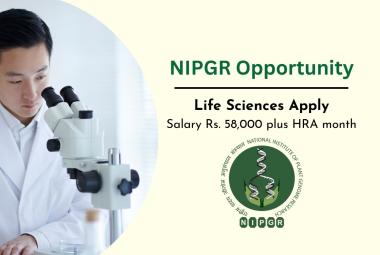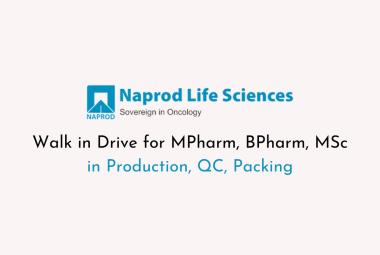About Authors: Parag Ghosh
Bharat Technolgy & West Bengal Universuty of Technology,
B.Pharm
Reference ID: PHARMATUTOR-ART-1067
Abstract
Antioxidant activity of ethanolic extract of C .hirsutus Diels leaves was studied for it free radical scavenging property in different in vitro models as 1, 1- Dipheheny1 – 2 picry1 hydrazy1, nitric oxide, superoxide and hydroxy1 radical model. The extract shows significant dose dependent free content suggesting the plant to exhibit antioxidant activity.
[adsense:336x280:8701650588]
Introduction
C. hirsutus Diels leaves wild (Sterculiaceae) commonly known as ‘Kanak champa’ is a shrubs distributed in tropical Asia. It has been traditionally used for blood troubles, inflammation, ulcer, tumors, leprosy and for small pox eruptions (wealth of India).
In an era lier study in our laboratory, the ethanolic extract of P. acerifolium were found to possess antiulcer activity.
The work was aimed at the scientific calidation of the ethnopharmacological cailm about anti inflammatory and analgesic propertics of the bark extract.
Materials and methods
Plants materials C.hirsutus Diels leaves berk were collected from East Midnapur (West Bengal, India) in july 2007 and authenticated by comparison with a voucher. Specimen in Botanical survey of India, Kolkata.
One kg. of the air dried barks were blended to a fine powder and extracted with Pet. Enter, chloroform and ethanol for 6 days (144hours). The extract was concentrated using a rotavapor. The extract was dissolved in normal saline before experimentation
Phytochemical screening
Theextract and its fraction were tested by the lierman Burchard, Ferric chlorides, Magnesium tracings and Vanillin sulphuric acid tested to determine the presence of sterols phenolic compound, flavonoids and saponins respectively.
Chemicals
All the chemicals used were in analytical grade 1, 1 – dipheny1 – 2 picry1 hydrazy1(DPPH) was obtained from sigma chemicals USA and rest of chemical were obtained from SISCO Resarch Laboratories Pvt. Ltd., Mumbai.
DPPH (Free radical) scavenging activity
DPPH free radical scavenging activity of C.hirsutus Diels leaves extract (10, 25, 50 and 100μg/ml)was estimated according to the method of Luseinskas et al. Methanolic solution of DPPH (0.3mM) produced a violet coloured which is stable at room temperature. 1ml of this solution was added to 2.5ml of sample solution containing different concentration of the tset drugs. After 30min of reaction time, the absorbance was measured at 518nm against appropriate blank and control. Finally DPPH scavenging activity was considered to be proportional to the decrease in optical density (cotelle et al 1996) quercetin (25 and 50μg/ml) and Vit-C (25 and 50μg/ml) was used as standard antioxidant.
Nitricoxide (NO) seavenging activity
Itric Oxide generated from sodium nitroprrside (in aqueous solution at physiological PG on interaction with oxygen produced nitrite ions which was measured by Griss reaction. The reaction mixture (3ml) containing sodium nitropruside (10mm) in phosphate buffer salaine and the C.hirsutus Diels leaves extract (10,25,50 and 100μg/ml) was incubated at 250C for 150min.after incubation 1.5ml of the reaction mixture was removed and 1.5ml of the Griss reagent (1% suphanilamide, 2% orthophosphoric acid and 0.1% Napthlethyline diamine hydrochloride) was added. The absorbance of the chromophore formed was read at 546nm. A decrease in absorbance indicated higher number scavenging activity (Green et al., 1994). Querectin (25 and 50μg/ml) and Vit. – C (25 and 50μg/ml) was used as standard antioxidant.
NOW YOU CAN ALSO PUBLISH YOUR ARTICLE ONLINE. SUBMIT YOUR ARTICLE/PROJECT AT articles@pharmatutor.org
Subscribe to Pharmatutor Job Alerts by Email
Superoxide anion (O2) scavenging activity
Superoxide anion scavenging activity of C.hirsutus Diels leaves extract (10, 25, 50 and 100μg/ml) was performed according to the method of Shorwaikar et al., 2004) with few modification. About1ml of nitroble tetrazolium (NBT) solution (156μm NBT in 100ml of phosphate buffer PH 7.4. 1ml of NADH solution (468μm in 100ml phosphate buffer PH7.5) and 0.1ml of sample solution of C.hirsutus Diels leaves extract were mixed thoroughly. The reaction was initiated by adding 100μm of phenazine methosulphate (PMS) solution (60μm PMS in 100mm phosphate buffer, PH 7.4) to the mixture. The reaction mixture was incubated at 250C for 5min and the absorbance at 560nm was measured against appropriate blank. Decreased absorbance indicated increased superoxide anion scavenging activity of the reaction mixture.Quercetin (50 and 100μg/ml) was used as standard free radical scavenger.
Hydroxyl (OH-) scavenging activity
Hydroxyl radical were generated by pheny1 hydrazine in solution which was measured by appearance of pink color (TBA) – MDA chromgen (due to OH- mediated decomposition of 2-Deoxyribose) (Haliwell and Gutteridge, 1981). The reaction was performed in incubation mixture containing 50mm phosphate buffer (PH 7.4), 1mm phnylhydrazine hydrochloride and C.hirsutus Diels leaves extract (10, 25, 50 and 100μg/ml) or (10 and 20) mm manitol. The final reaction value was made upto 2ml. incubation was terminated after 1hr or 4hrs. with 2.8% TCA (1ml). Thiobarbituric acid (1%w/v) was than cooled briefly and absorbance was taken at 532nm. A decreased in absorbance indicated hydrexy1 radical scavenging activity.
Determination of total phenolic compounds
Total soluble phenolic compound of C.hirsutus Diels leaves extrace were determined with Polin-ciocalteu reagent (according to the method of Slinkad and singleton, 1977) using Catechin as standare polyphenol. TheC.hirsutus Diels leaves extract and Polin-ciocalteu reagent (1ml wasmixed thoroughly in a volumetric flask (50 ml). After 3min of sodium carbonate (5% w/v) was added and the mixture was allowed to stand for 2hr in dark with intermittent shaking. The absorbance was measured at 760nm. The contration of total phenolic compound in the p.phenolic content was expressed as μg of catechin equivalent.
The equation in used as
Absorbance =0.001 x phrocatechol (μg) + 0.0033.
Results
Alcoholic extract of C.hirsutus Diels leaves was analyse for total soluble phenolic content (expressed as μg of catechin per ml) and it was found to 23%. However, in all the different experimental model the total phenol content was maintained at 18%.
In DPPH scavenging activity model it was observed that C.hirsutus Diels leaves extract (in dose of 10, 25, 50 and 100μg/ml) significantly scantly scavenged (88.7%, 90.48%, 91.29% and 91.45%)respectively DPPH free radical in a concentrated dependent manner. However, quercetin (25 and 50μg/ml) and vitamin – C (25 and 50μg/ml) showed even more effective free radical scavenging (86%,86.29%,88.5% and 89.19%) respectively…………….. Table No. 1.
Table No.1: Effect of C.hirsutus Diels leaves extract on DPPH free radical scavenging activity(Results are expressed assed as mean ± S.E; n=6)
|
Drug |
Dose Μg/ml |
DPPH free radical Scavenging (measured At518nm) |
% of Inhibition |
|
Control |
- |
0.621 ± 0.0014 |
- |
|
P.acerifolium extract
|
10 |
0.070 ± 0.0033* |
88.7 |
|
25 |
0.058 ± 0.00033* |
90.48 |
|
|
50 |
0.054 ± 0.0033* |
91.29 |
|
|
100 |
0.052 ± 0.00033* |
91.45 |
|
|
Quercetin
|
25 |
0.086 ± 0.00033* |
86 |
|
50 |
0.085 ± 0.00033* |
86.29 |
|
|
Vitamin – C
|
25 |
0.071 ± 0.00033* |
88.5 |
|
50 |
0.067 ± 0.00033* |
89.19 |
P value vs. contral (by students ‘t’ test.)* P <0.001
C. hirsutus Diels leaves extract (in the dose of 10, 25, 50 and 100 μg/ml) significant scavenged (63.6%, 84.05% and 94.4%) the nirticoxide radical. Although the standard antioxidant like quercetin (25 and 50 μg/ml) and vitamin – C (25 and 50μg/ml) were found to produce a more potent numbe radical scavenging activity (96.2%, 97.1%) ……..……. Table No. 2.
NOW YOU CAN ALSO PUBLISH YOUR ARTICLE ONLINE. SUBMIT YOUR ARTICLE/PROJECT AT articles@pharmatutor.org
Subscribe to Pharmatutor Job Alerts by Email
Table No. 2: Effect of alcoholic extract of C. hirsutus Diels leaves bark on nitric oxide scavenging activity. (Results are expressed as mean ± S.E; n=6)
|
Drug |
Dose Μg/ml |
Nitric oxide scavenging activity |
% of Inhibition |
|
Control |
- |
0.048 ± 0.0044 |
- |
|
P.acerifolium bark extract
|
10 |
0.132 ±0.0043** |
63.6 |
|
25 |
0.301 ± 0.0098** |
84.05 |
|
|
50 |
0.532 ± 0.0017* |
90.97 |
|
|
100 |
0.864 ± 0.03* |
94.4 |
|
|
Quercetin
|
25 |
0.707 ± 0.0043* |
93.2 |
|
50 |
0.935 ± 0.016* |
94.8 |
|
|
Vitamin – C
|
25 |
1.264 ± 0.042* |
96.2 |
|
50 |
1.656 ± 0.018* |
97.1 |
P value vs. control (by students ‘t’ test.) *P <0.001 **P <0.05
In Superoxide scavenging activity mode the extract in the concentration of (10, 25, 50 and 100μg/ml) singnificantly scavenged (7.3%, 16.4%, 38.7%, 54.7%) respectively has significant inhibition of activity with respect to control value similarly quercetin found to be demonstrate potent (14.8%, 15.98%) scavenging activity………….. Table No. 3.
Table No.3: Effect of Ethanolicextract of C.hirsutus Diels leaves bark on Superoxide scavenging activity. (Results are expressed as mean ± S.E; n=6)
|
Drug |
Dose Μg/ml |
Superoxide radical Scavenging activity |
% of Inhibition |
|
Control |
- |
0.0682 ± 0.039 |
- |
|
P. acerifolium bark extract
|
10 |
0.0632 ± 0.00033* |
7.3 |
|
25 |
0.570 ± 0.0026* |
16.4 |
|
|
50 |
0.418 ± 0.010* |
38.7 |
|
|
100 |
0.309 ± 0.0069* |
54.7 |
|
|
Quercetin
|
25 |
0.581 ± 0.017 |
14.8 |
|
50 |
0.573 ± 0.0078* |
15.98 |
|
|
Vitamin – C
|
25 |
0.543 ± 0.0043* |
20.38 |
|
50 |
0.428 ± 0.0046* |
37.2 |
P value vs. contral (by student ‘t’ test.) *P <0.01
In hydroxy1 radical scavenging activity (10, 25, 50 & 100μg/ml) and quercetin and vitamin – c are used as standard (70%, 74%, 81.8% and 85.6%) OH- radica scavenged significantly inhibited OH- radical medical mediated degradation of 2-Deoxyribose after 1 hr……………… Table No.4.
Table No. 4: Effect of alcoholic extract of C.hirsutus Diels leaves bark on Superoxide scavenging activity. (Results are expressed as mean ± S.E; n=6)
|
Drug |
Dose Μg/ml |
Hydroxy1 radical scavenging activity |
% of Inhibition |
|
Control |
- |
0.390 ± 0.0035 |
- |
|
P. acerifolim bark Extract
|
10 |
0.171 ± 0.0049* |
56.2 |
|
25 |
0.153 ± 0.00058* |
60.77 |
|
|
50 |
0.149 ± 0.0058* |
61.79 |
|
|
100 |
0.147 ± 0.0018* |
62.31 |
|
|
Quercetin
|
10 |
0.114 ± 0.0029* |
70.77 |
|
25 |
0.101 ± 0.0026* |
74.10 |
|
|
Vitamin – C
|
50 |
0.071 ± 0.026* |
81.8 |
|
100 |
0.056 ± 0.00058* |
85.6 |
P value vs. contral (by students ‘t’ test.) *P <0.01
NOW YOU CAN ALSO PUBLISH YOUR ARTICLE ONLINE. SUBMIT YOUR ARTICLE/PROJECT AT articles@pharmatutor.org
Subscribe to Pharmatutor Job Alerts by Email
Discussion
The extract showed significant antioxidant activity in vitro by free radical scavenging model. Free radicals are chemical entities that can exist separately with one or more unpaired electrons. The propagation of free radical can brings about many adverse reaction leading to extensive tissue damaged. Lipid proteins are all susceptible to attack by free radical (Cotran 1999, Yu et al 1992). DPPH is a relatively stable free radical and the assay to determine the ability of C.hirsutus Diels leaves extract to reduceDPPH radical to the corresponding hydrazine by converting the unpaired electrons to pairs one, which in fact is the action of antioxidant. Various reactive free radicals, nitric oxide (NO) arouses interest due to reports of its multiple physiological roles (Nakagawa et al, 2002). Furthermore, literature survey also reveals the usefulness of synthetic free radicals, this free radical is chemically stable and it accepts an electrons or hydrogen to produce a stable diamagnetic molecules (Soares et al 1997). The effectiveness of a compound showing scavenging activity against DPPH free radical is indicated by a decrease in absorbance. Similar decrease I optical density is used for evaluation of NO scavenging activity. In the present study P. acerifolium extract showed significant scavenging of NO. The extract also significantly scavenged DPPH radical in a dose of dependent manner.
There are many popular theories to explain oxygen mediated toxicities and among them superoxide (O2) theory is by far one the most important one. The propose that oxygen toxicity is due to enormous production of (O2) which may take place due to unwanted oxidation of biologoically important molecules. Accordingly, superoxide radical scavenging activity was estimated following PMS / NADH – NBT system and c.hirsutus Diels leaves extract exhibited significant reduction in the appearance of this radical indicating its superior scavenging property.
According to Mc Cord (1974), OH- radical (generated secondarily by the reaction of superoxide and hydrogen peroxide) actually brings about depolymerisation of hyaluromic acid as a OH- scavenger can return the viscosity of hyaluromic acid solution. Hydroxy1 radical (OH-) is closely associated with inflammatory disorder like arthrititis where a progressive loss of hyaluromic acid in joint important feature of disease. In our study C.hirsutus Diels leaves extract produce a dose dependent scavenging of OH- radical. The activity of extract was most effective in the first hour of the study. The observed dose dependent scavenging effect can be explained by the understanding the nature and generation of radicals as well as studying the different in physical and chemical properties of the natural occurring antioxidant (Khanamm et al 2004, Schwart et al 2001). The stable radicals like DPPH react stoichometrically with antioxidant which are hydrogen donors (Blois et al 1958, Schwqrt et al 2001, Gardner et al 1998). But antioxidants which are effective chelators of transition metal ions may contribute differently to the antioxidant response in hydroxy1 inhibition assay. A substance may act as an antioxidant to its ability to reduce reactive oxygen species by donating hydrogen atom (Jayprkash et al 2001).
The reducing property of C.hirsutus Diels leaves extract indicates that it is capable of donation hydrogen atoms in dose dependent manner. The high content of phenolic compound in the extract may be a associating factor towards antioxidant activity, because the phenolic compound are known to have direct antioxidant property due to presence of hydroxy1 group (Arnason et al 1981, Dreosti et al 2000, Duh et al 1999).
References
1. Luscinskas F.W., Gimbrone, Jr. M.A. (1996) Annu R.W. Med. 47 : 413 – 421.
2. Green S., and Wahli W., (1994) Molecular cellular Endocrinol. 100:149.
3. Green R.H., (1949) Proc. Soc. Expt. Biol. Med – 71:84.
4. Haliwell B, and Gu Heridge J.M., (1990) Arch Biochem. Biochem. Biophys. 280:1.
5. Slinkand, K. and Sing letin, V.L. Am. J. Enol. Vitic, 1977, 28,49.
6. Cotelli, A. Bernier, J. L., Catteau, J.P.
7. Pommery J., Wallet, J.C. and Gaydiu, B.M., Free Radic. Biol. Med. 1996,20,35.
8. Kirtikar, K.R. and Basu, Basu, B.D., Indian Medicinal Plant, Vol. VIII. P. 312.
9. Shir Waikar,A., Rajendran, K. and Dinesh, K.C. Indian J. Exp. Biol, 2004,42,803.
10. Robak, J and Gryglewski, R.J. Biochem. Pharmacol,1998,37,837.
11. Cotran, R.S., Kumar, V. and Collin, T, C.C. Robin’s Pathological basis of diseases.
12. Thromson press (I) Ltd., Noida, Inda, 1999, P.1.
13. Yu, B.P., Suescum, E.A. and Yang, S.Y., Mech. Agening Dev., 1992,65,17.
14. Nakagawa T, Yohozowa, T, (2002) Food and Chemical Toxicology (40),1745 – 1750.
15. Soares J.R.., Dinis T.C., Cunha A.P., Almeida L.M., (1997) Free radic. Res. 26; 469-78.
16. Macord J.M. (1974) Science, 185; 529.
17. Khannam, S., Shivprasad, H.M.and Kshama, D., Indian J. Pharm Edue., 2004, 38, 180.
18. Schwarz, K., Bertelsen, G., M.I, Hopia. Food Res. Technol., 2001 ,212, 319.
19. Blois, M.S. Nature 1958, 26, 1199.
20. Gardner, P.T., Mephal, D.B. and Dulhie, G.G., J. Sci. Food Agric 1998, 76, 257.
21. Jayprakash, G.K., Singh, R.P. Food chem; 2001, 55, 1018.
22. Duh, P.D., Tu, Y.Y. and Yen, G.C., Labensmitted – Wissenschaft and Technologic, 1999, 322, 69.
23. Dreosti, I.E., Nutrition, 2000, 16, 692.
24. Arnason, T., Hebda, R.J. and johns, T., Canadian Bot., 1981, 59, 2189.









